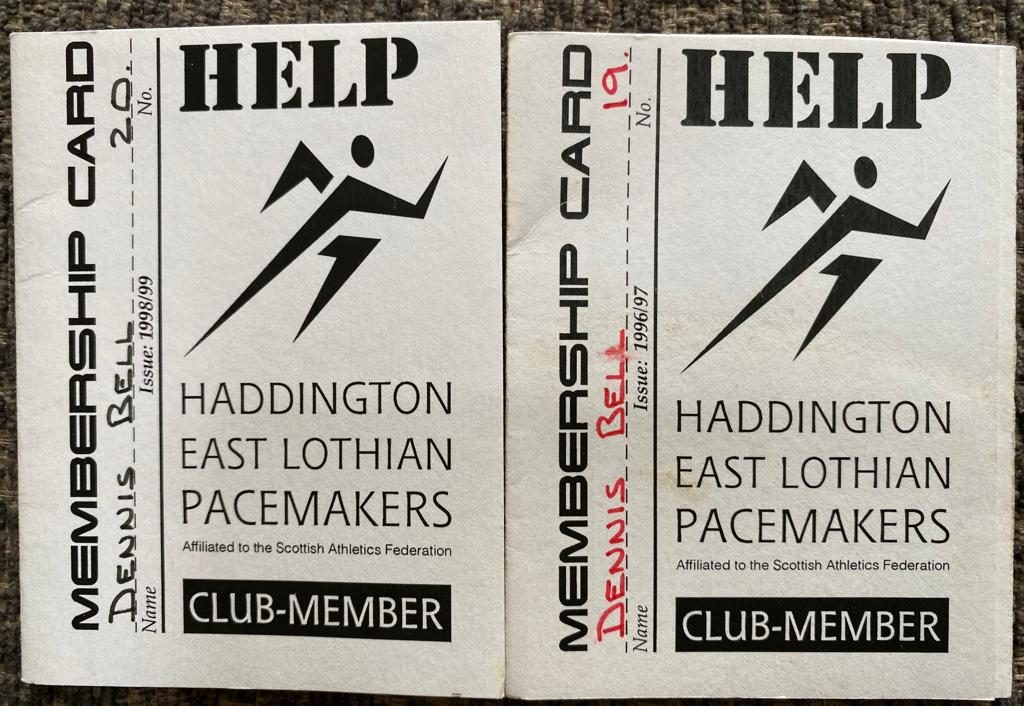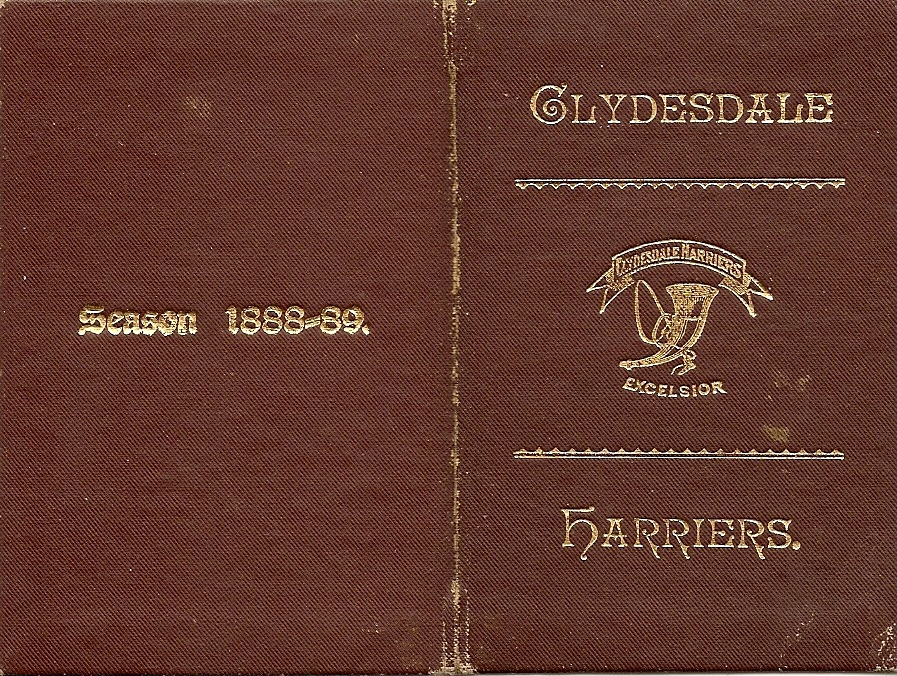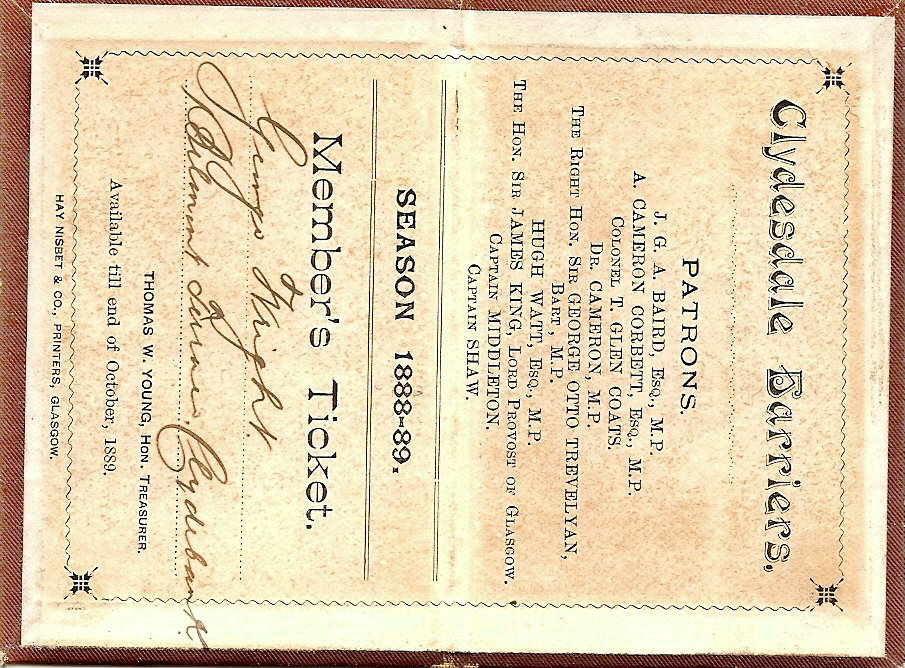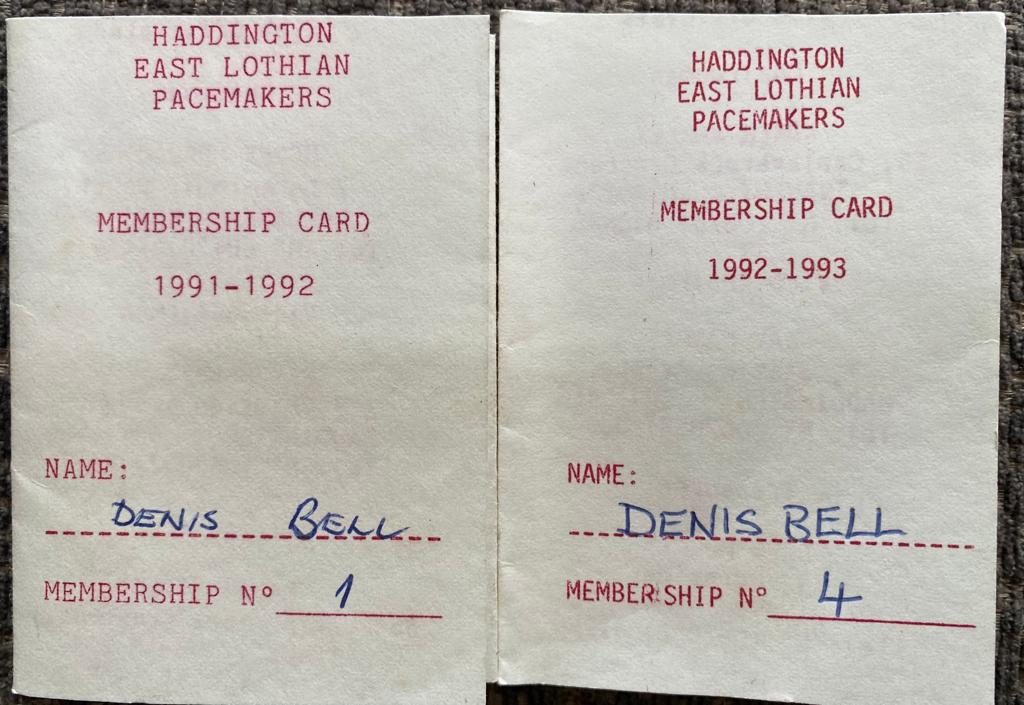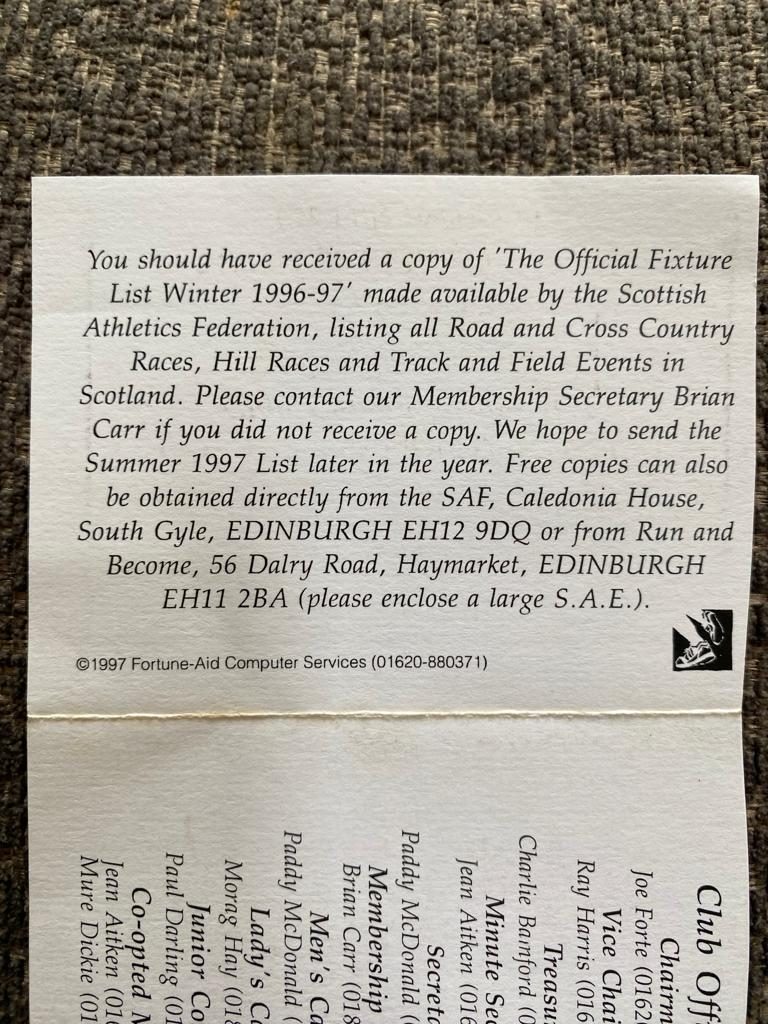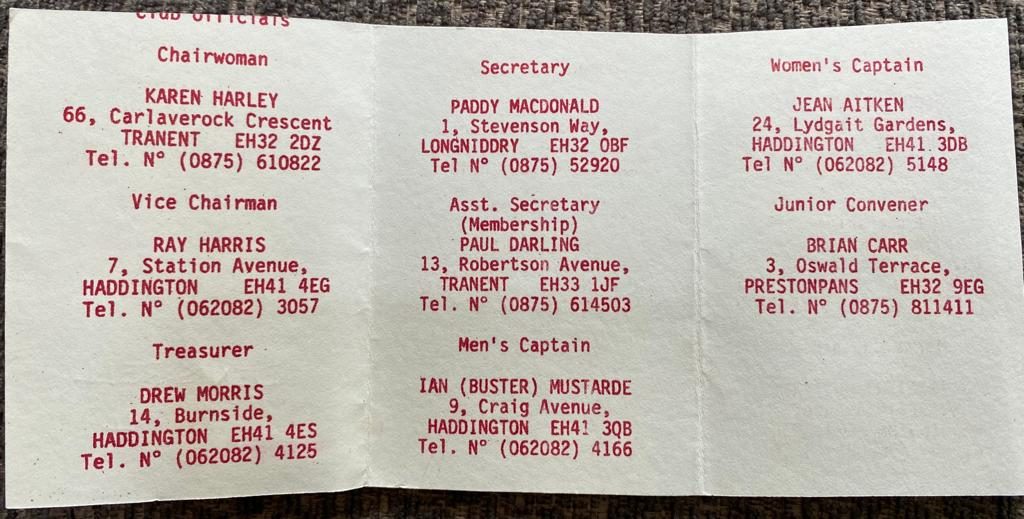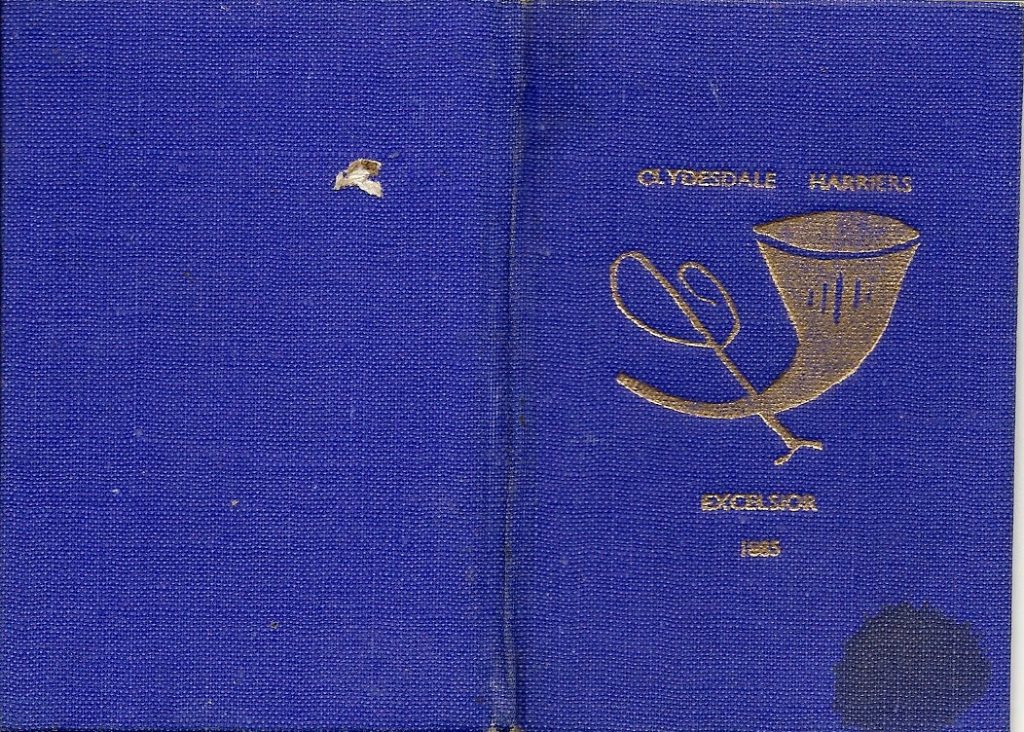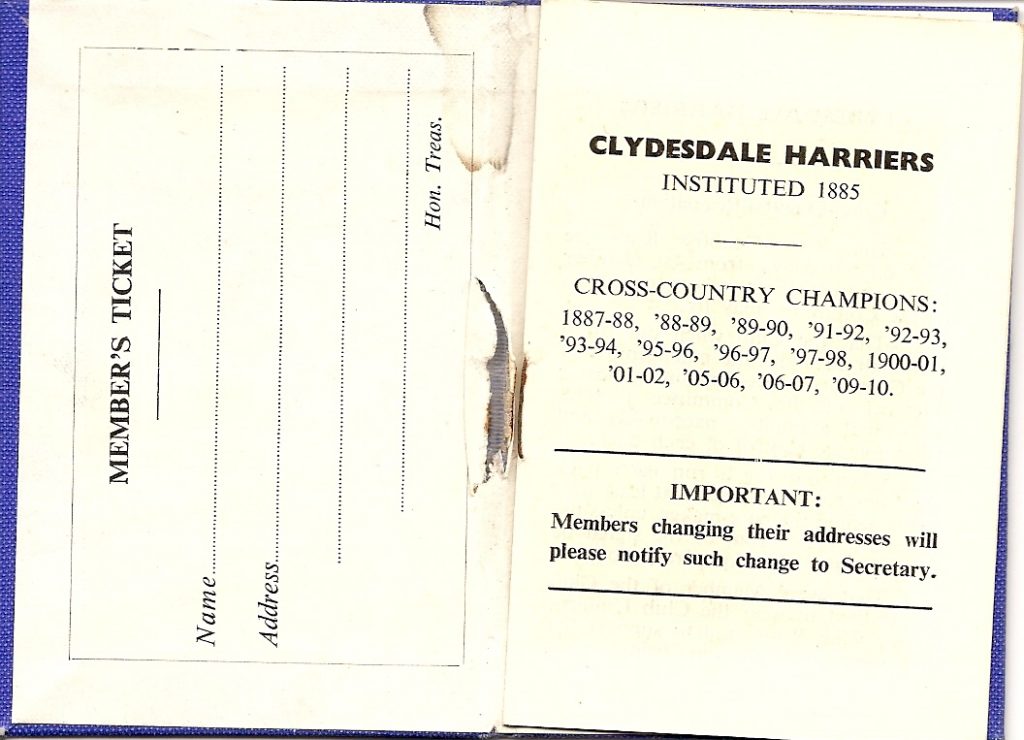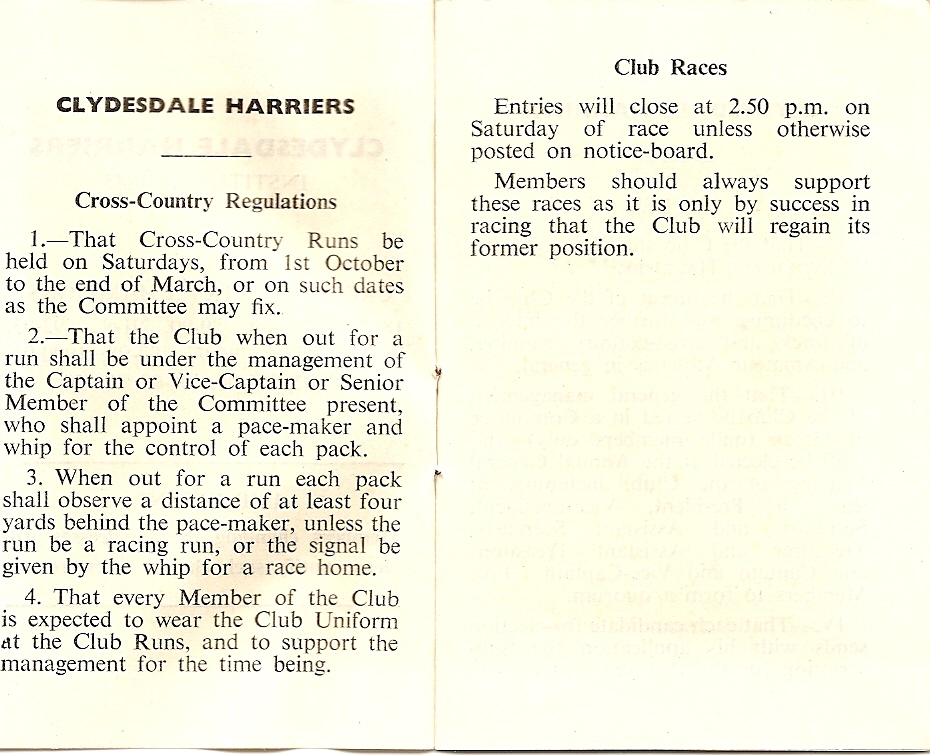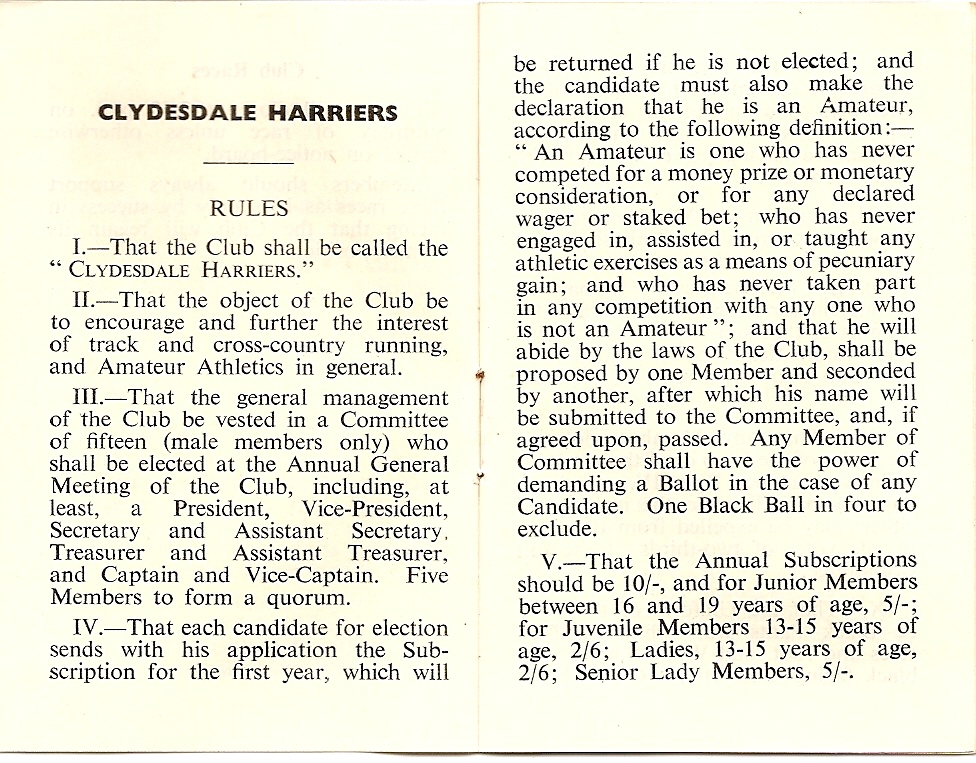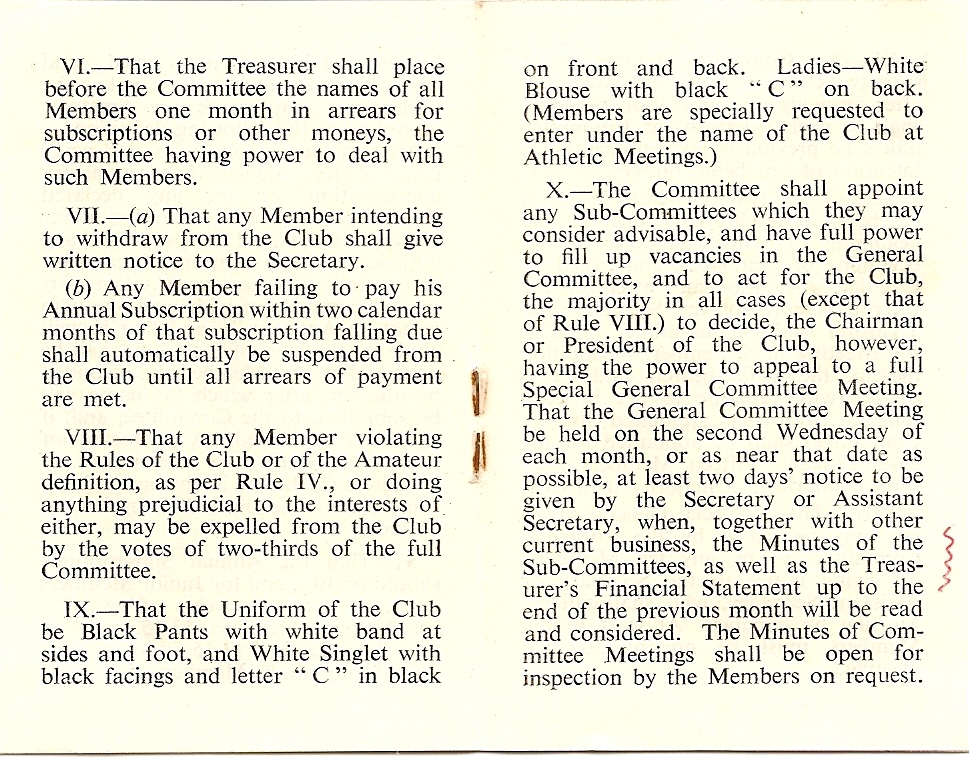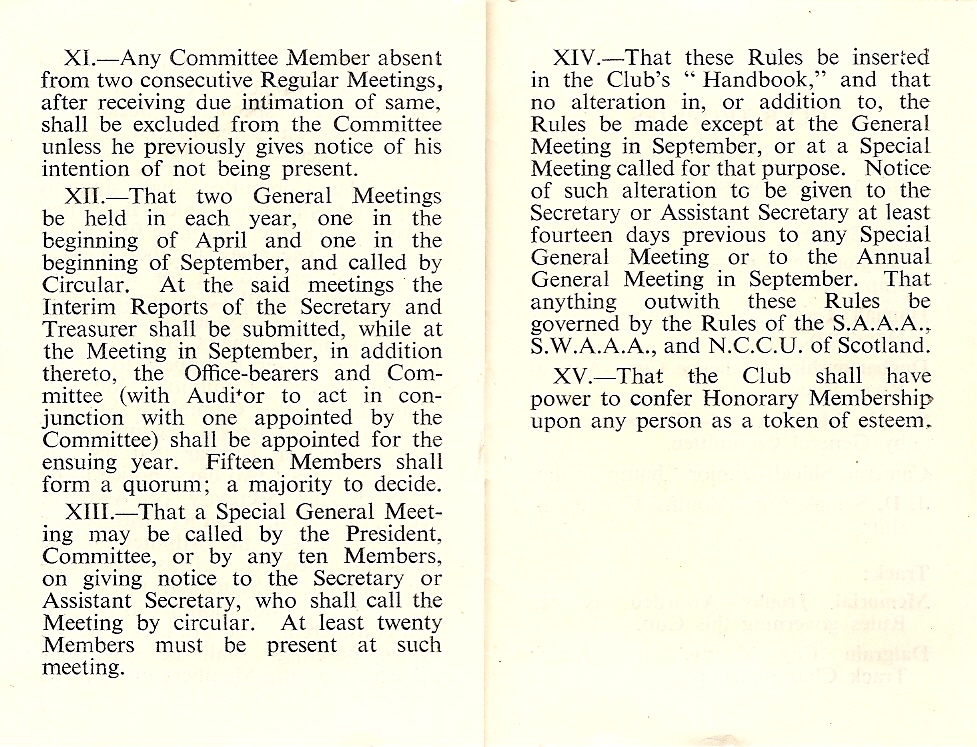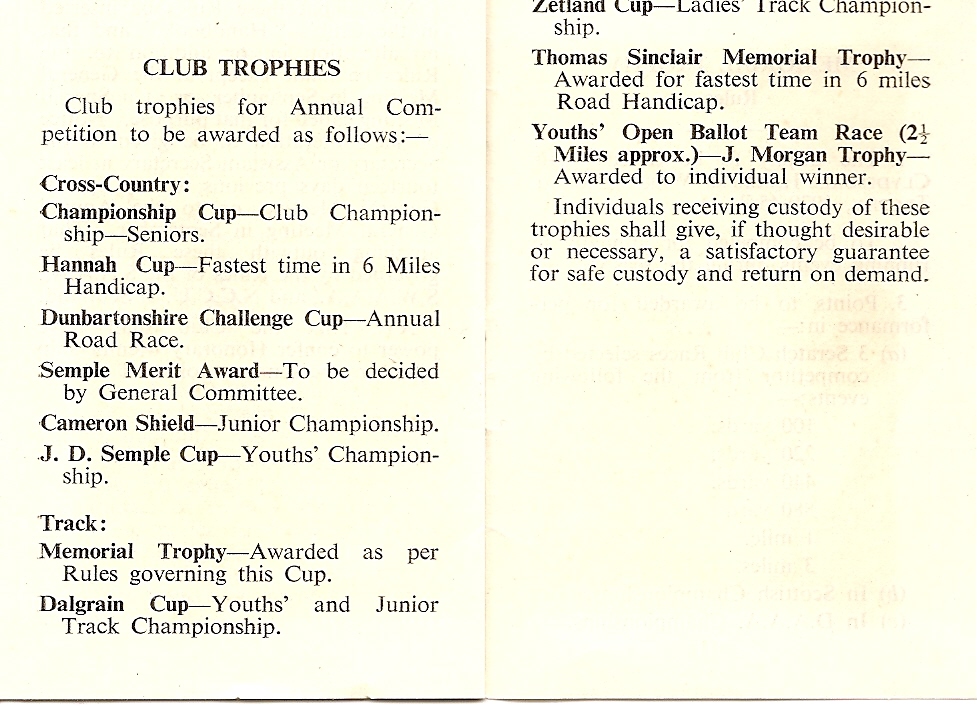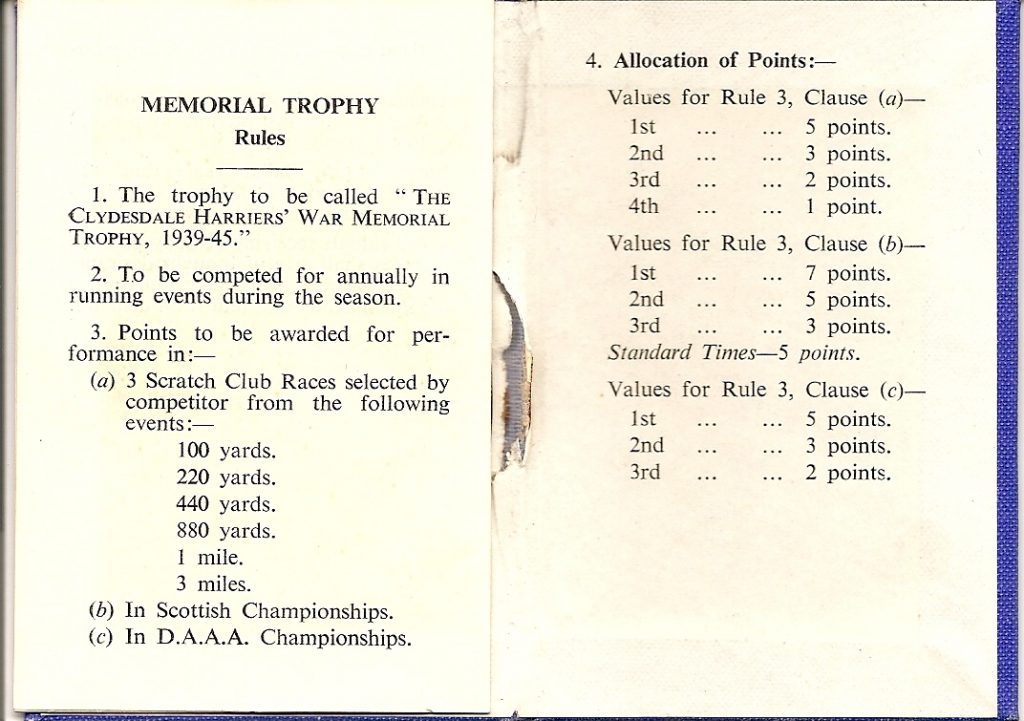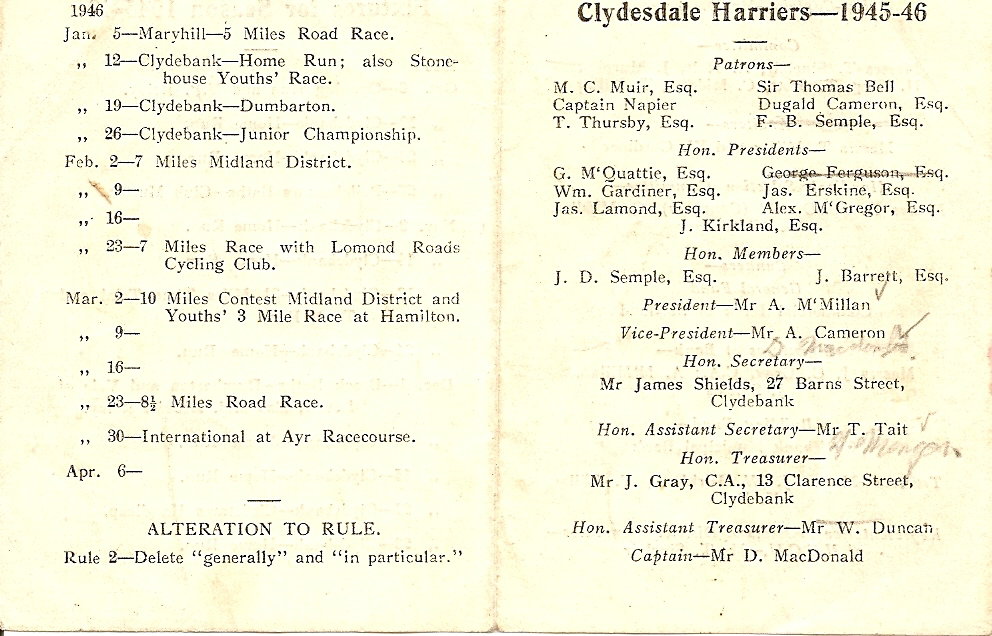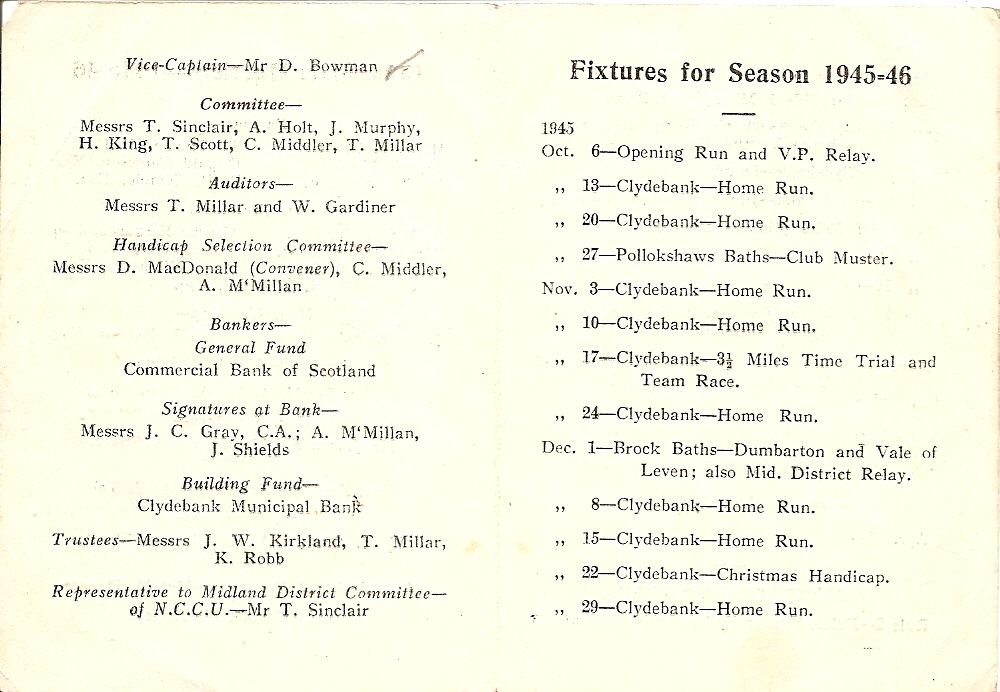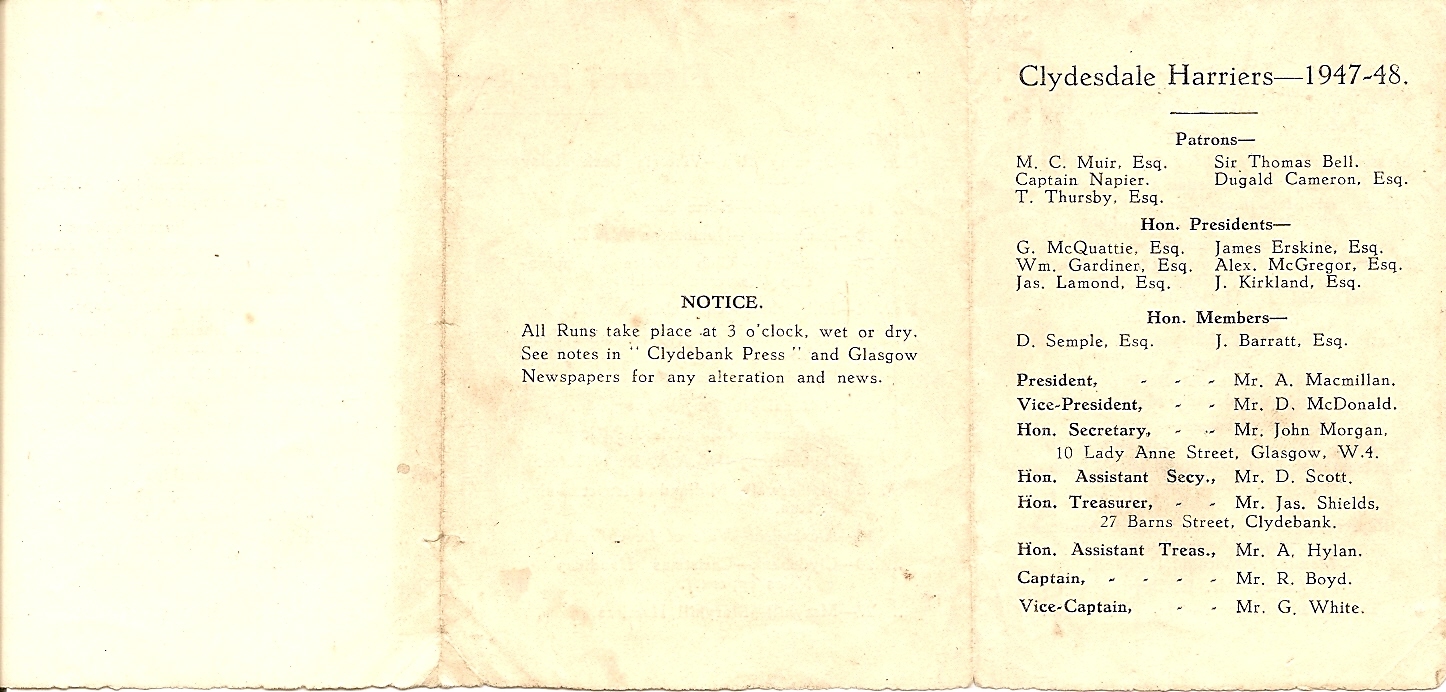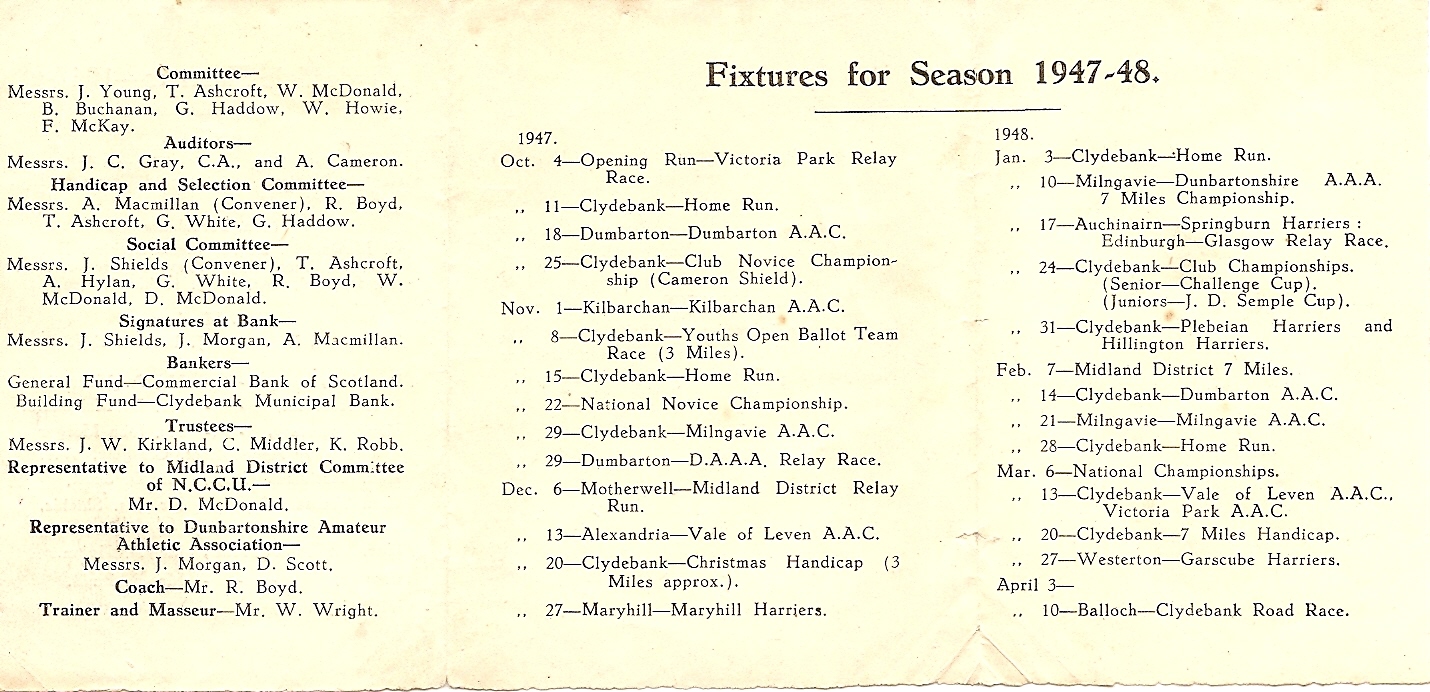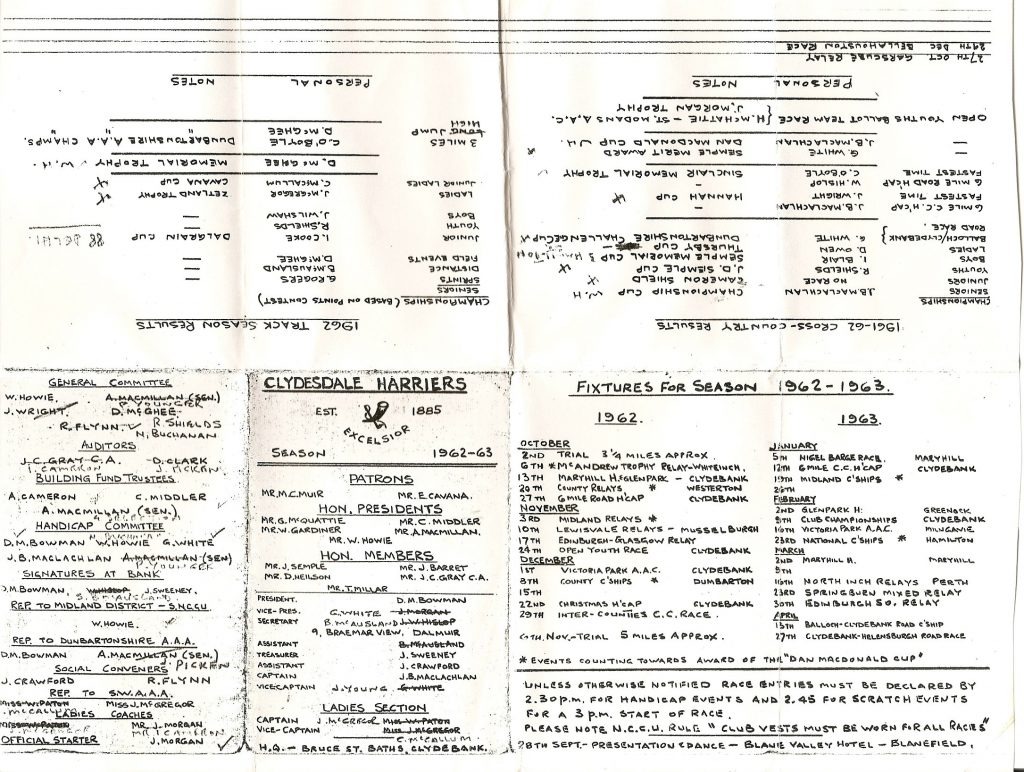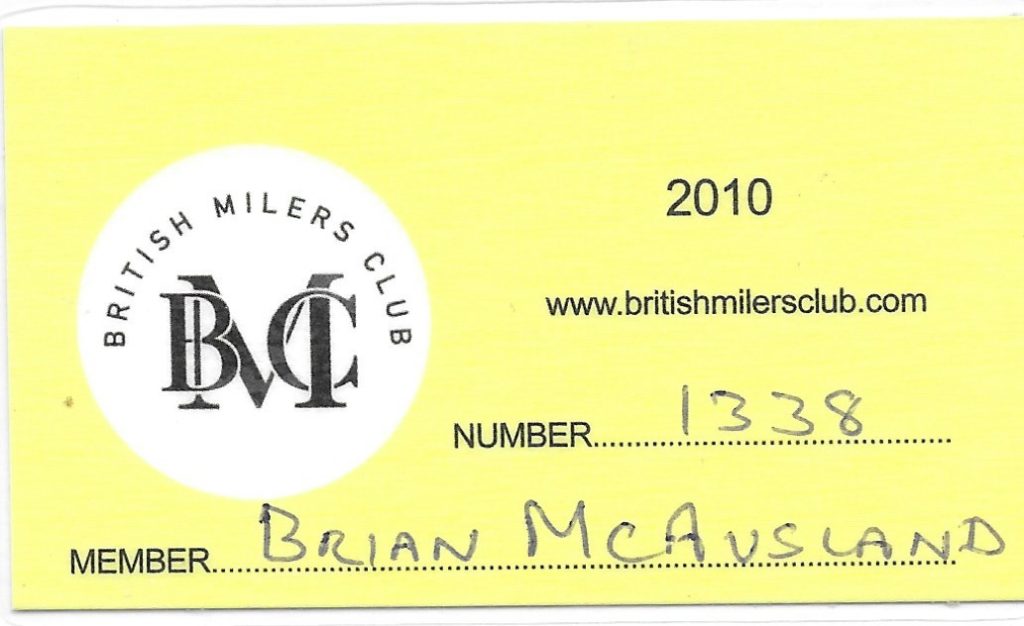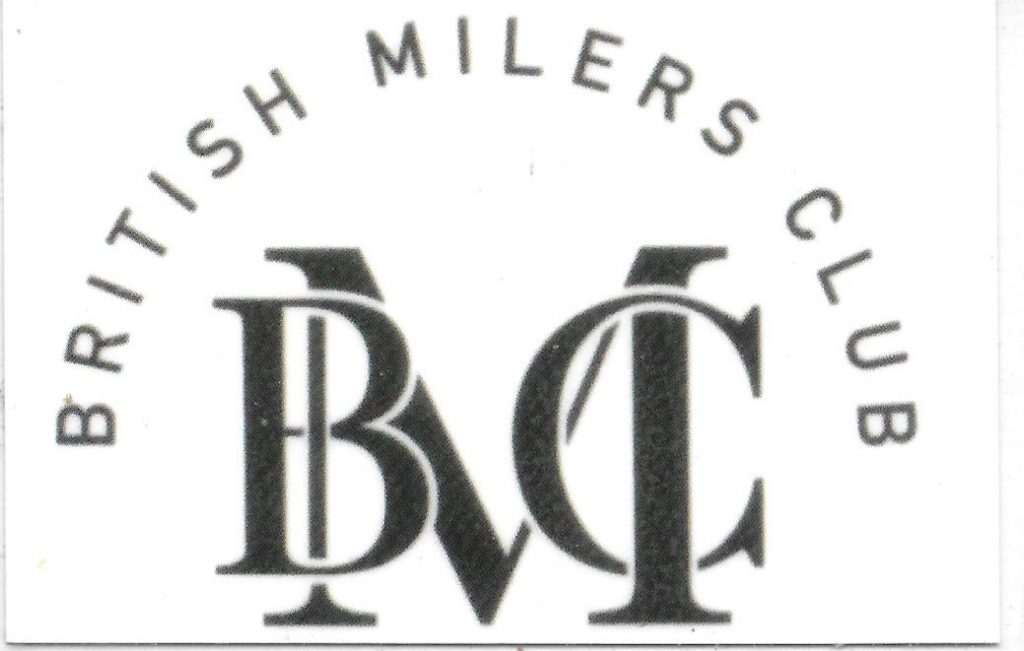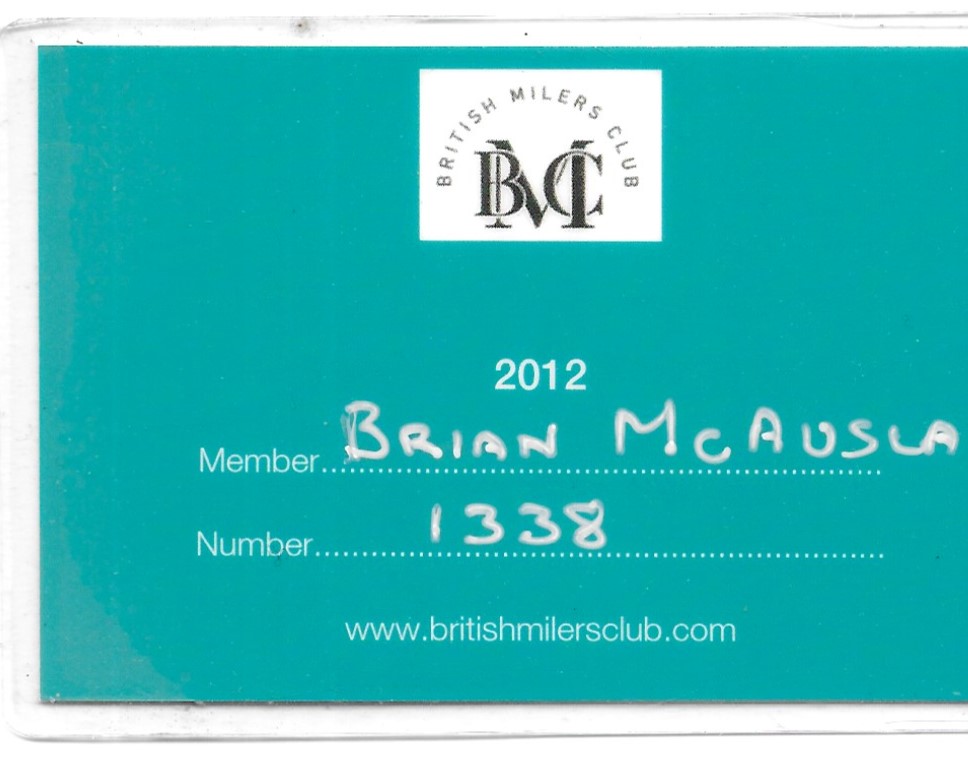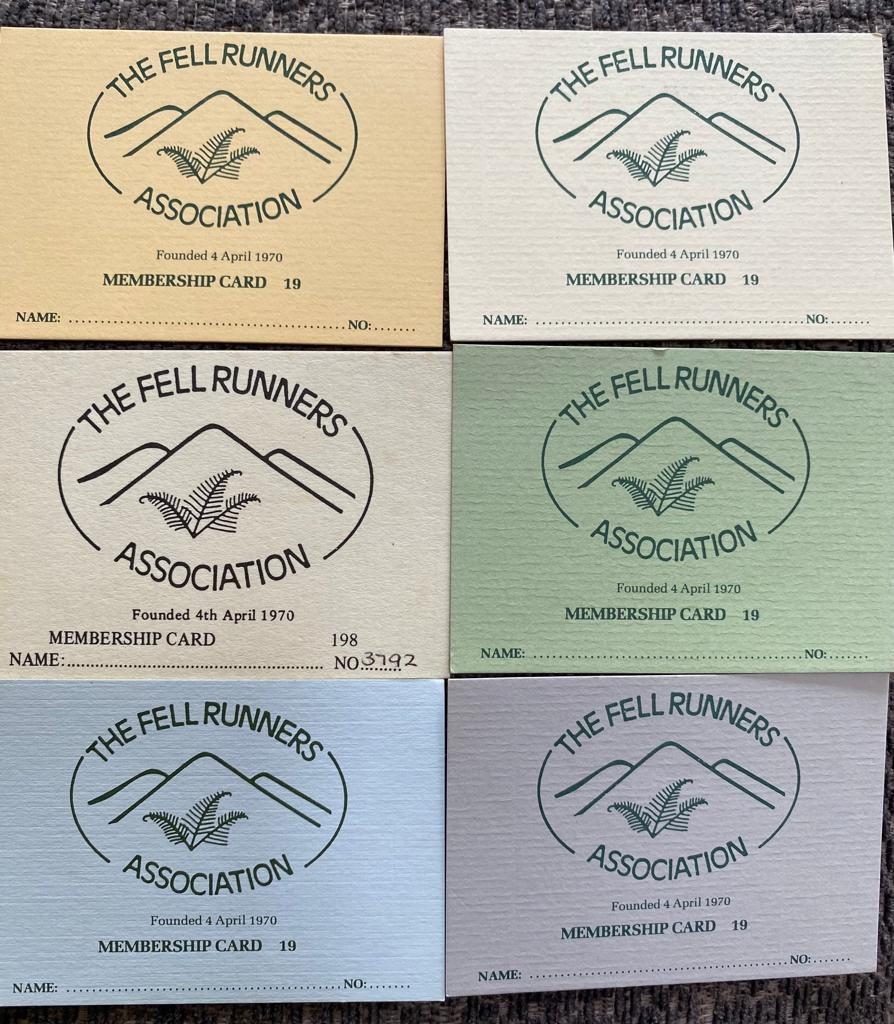Club members enjoy many privileges of membership – the right to train with the club, to use club facilities, to wear club uniform in races and compete in club championships, the right to represent the club in championship races and in many cases the right to club discounts in various shops and so on. To prove their right to these – and most importantly perhaps – the payment of this year’s subscription, they were issued with a membership card, often enough this was a small handbook, with the current year’s date, signed by the club Secretary or President. The variety of such cards is manifold and some will be looked at here. Why bother showing something as commonplace as a card? Because now most of these transactions are recorded on line and many will never have seen them. All clubs had membership cards, Denis’s are here because HELP was typical.
Clydesdale Harriers was the first open athletic club in the country and members were issued with cards as illustrated above (outside) and below (inside)
This contained only the date, member’s name and address and a note of club patrons. Patrons have long gone out of fashion for most clubs with benefactors (when there are any) listed as ‘sponsors’. The card developed into a member’s handbook of anything up to 42 pages, most often somewhere in the 20’s with details of committee members, fixtures, club meeting places for travel to these fixtures, comprehensive lists of members with their addresses, club rules and regulations and a summary of the previous year’s championships. This was standard for the initial clubs but gradually diminished in size, probably because of the expense of production relative to the membership fee combined with smaller numbers.
For the period we are dealing with they had been reduced to small booklet size, about 8 pages, and then to a single card.
The cards which became almost standard started off as pretty basic productions and then grew to to be professionally designed and produced. Some of Denis Bell’s membership cards as a member of Haddington East Lothian Pacemakers are reproduced. Four cover shots – 1991/92 and 1992/93 – to start with
and a change of design (not an uncommon practice) for 1996/97 and 1998/99
Then there were the inserts – tri-fold in this case –
The Clydesdale Harriers issued a membership booklet immediately after the war which was a reduced version of the original pre- WW1 handbook. The 1945/46 one is below. They were relatively expensive with their cloth covered cover and many pages so it became the practice to give one to the athlete on joining and subsequently a paper insert was given in return for the subscription.
Inserts issued for the two years after the war:
Eventually even this was seen to be inappropriate and David Bowman devised a compendium of rules and results on a single sheet of foolscap folded into eight pages –
Multi-club clubs
There were, and still are, specialist clubs in existence such as the British Milers Club, the Fell Runners Association, the Scottish Hill Racers Association and so on. For the multi-club clubs the identity of the athlete was not always clear to race organisers – a Scottish BMC member could find himself running in club Grand Prix races in Manchester, Birmingham or Kent in the course of the year – or discount-offering businesses without a distinctive form of identification. For instance the British Milers Club with members all over the United Kingdom a card like the one below was produced in 2010, which had a plain white back, followed by the 2012 model –
Both of the above were for the same 2012 membership card, obverse and reverse.
The Fell Runners cards, like the BMC cards, were the basic, slip-it-in-your-shirt-pocket or in your wee trifold wallet kind of thing that could be shown to race organisers.
